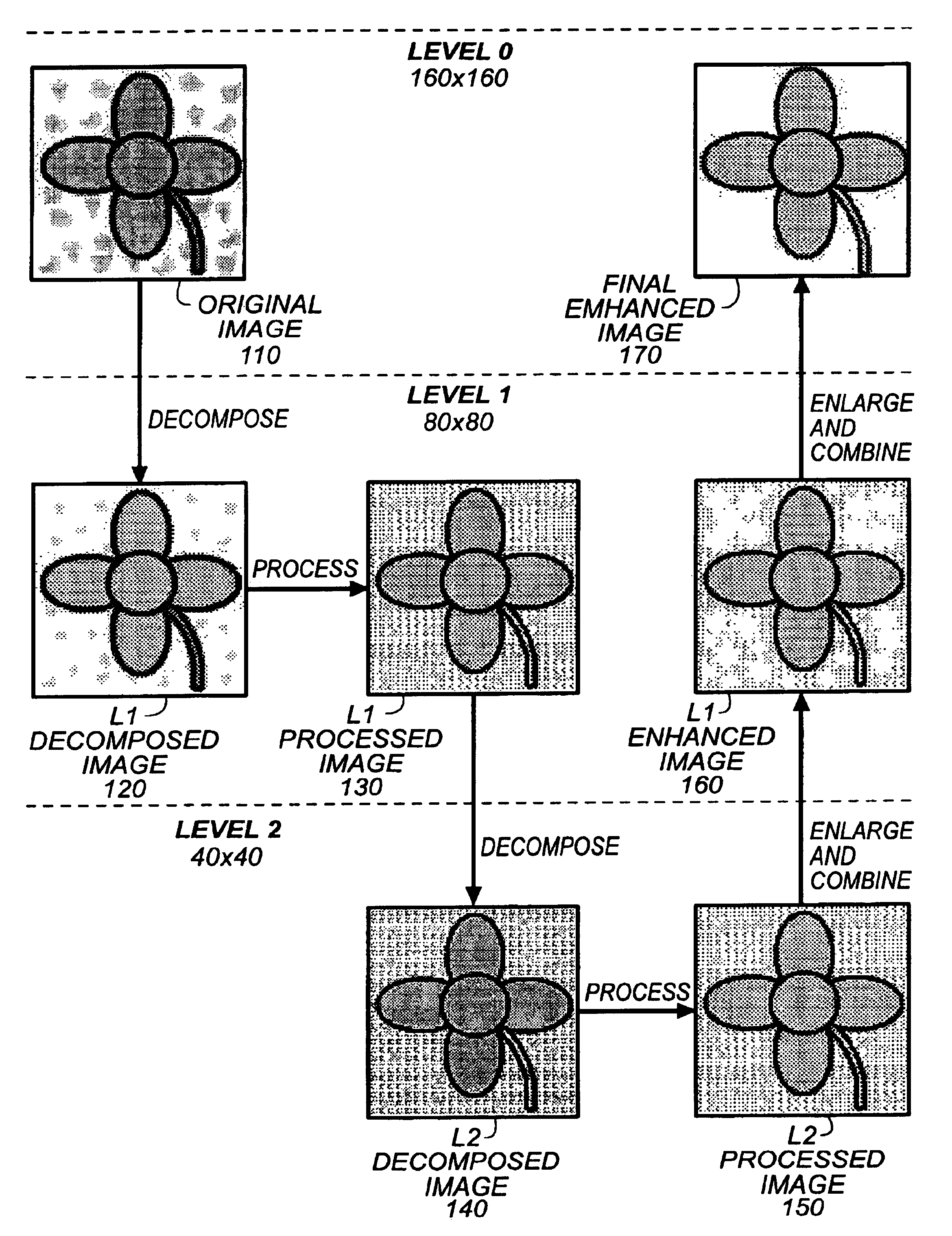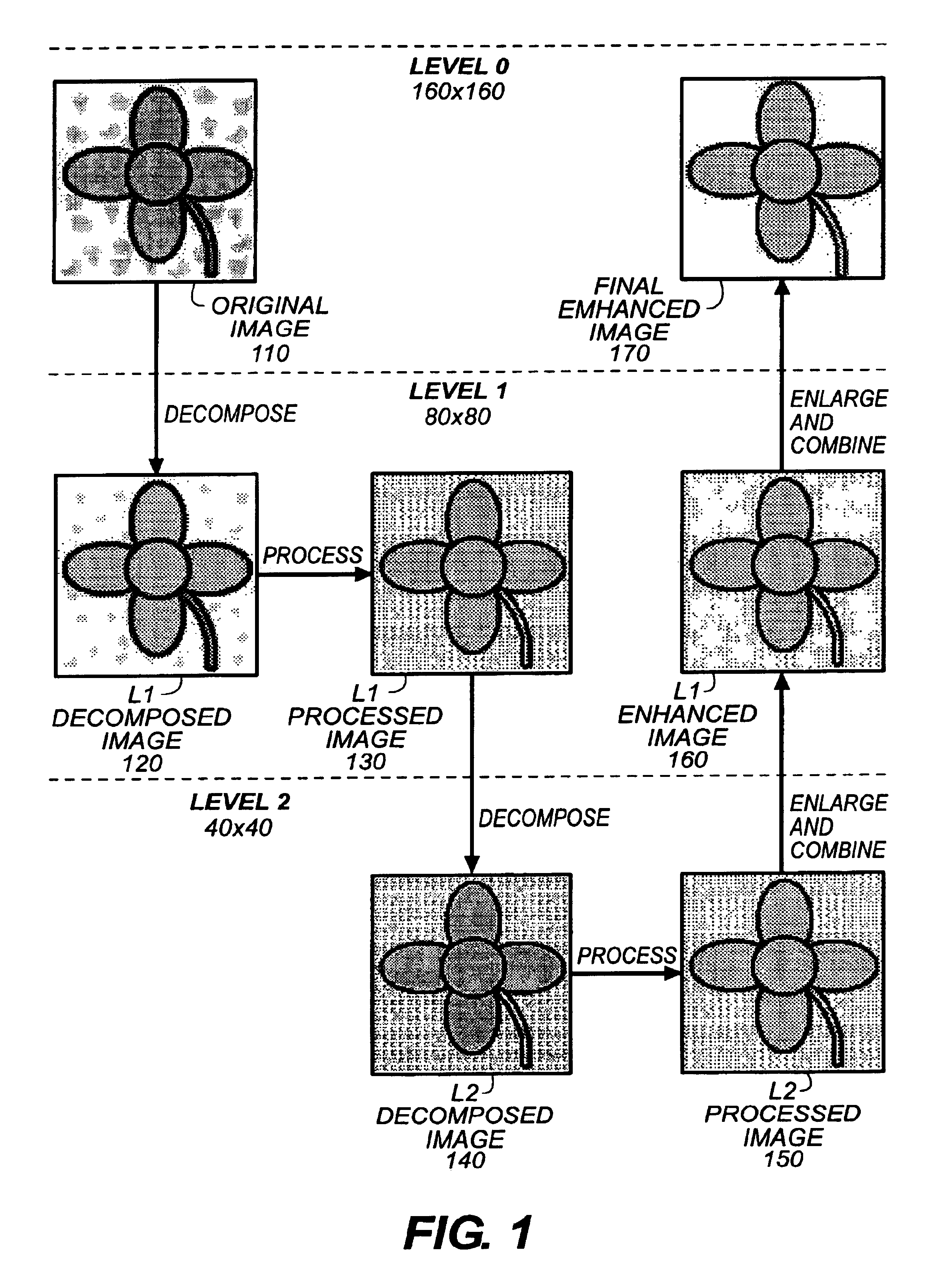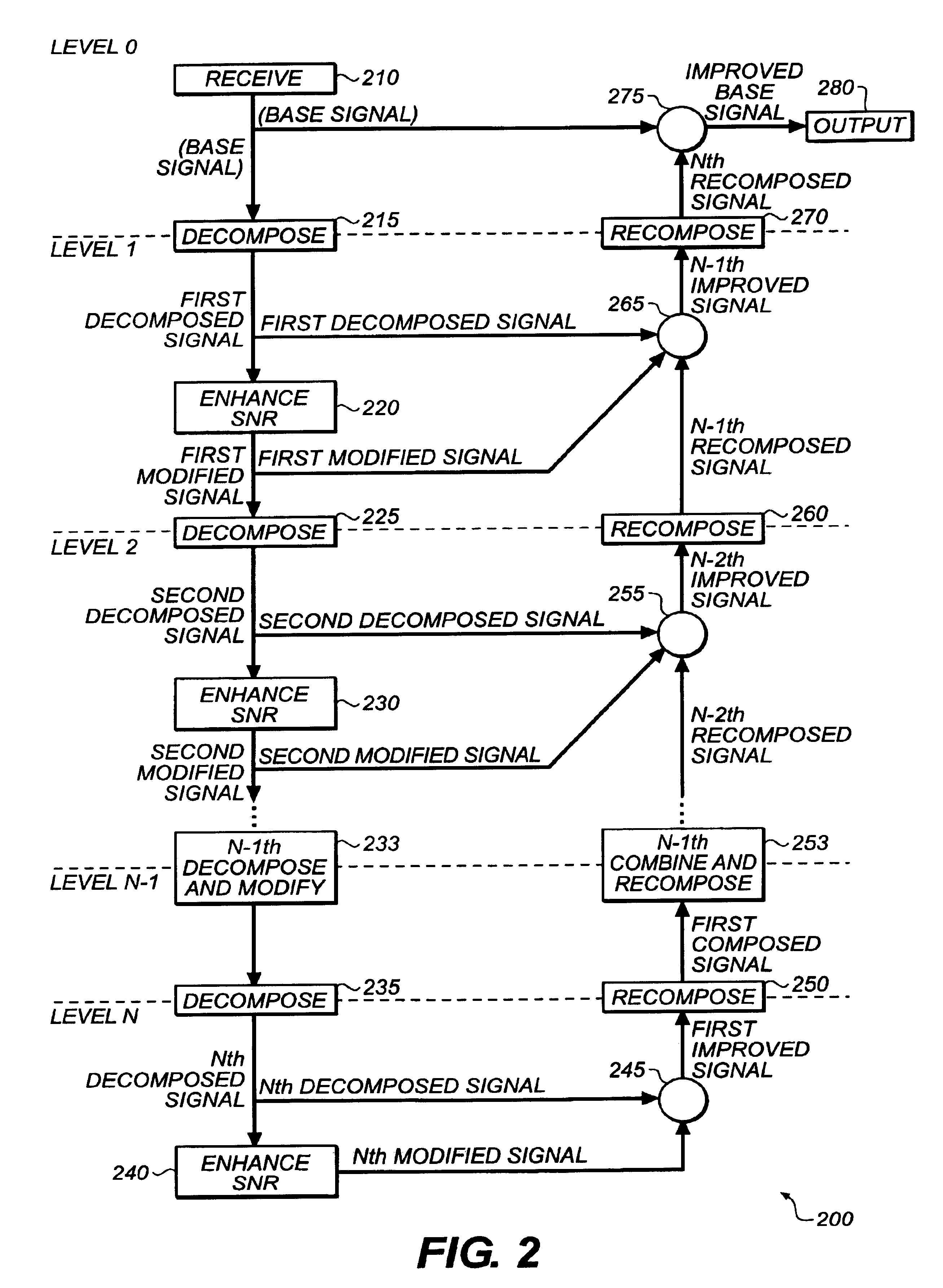Method, system, and software for signal processing using pyramidal decomposition
- Summary
- Abstract
- Description
- Claims
- Application Information
AI Technical Summary
Benefits of technology
Problems solved by technology
Method used
Image
Examples
Embodiment Construction
[0026]FIGS. 1-16 illustrate a method, system, and software for pyramidal decomposition of a base signal to improve one or more components of the base signal. The base signal is decomposed into a first decomposed signal of a lesser resolution. The decomposed signal of the first level is modified to improve a signal component or characteristic of the decomposed signal, such as the signal-to-noise ratio, resulting in a modified signal for the first pyramid level. The modified signal for the first pyramid level is decomposed and modified at a second level, resulting in a modified signal for the second pyramid level. The remaining pyramidal levels are recursively decomposed and modified as in the first and second level. At the lowest desired pyramid level, the lowest modified signal is combined with one or more signals from the second lowest pyramid level, resulting in an improved decomposed signal at the second lowest level. The results of the combination are recomposed and then combine...
PUM
 Login to View More
Login to View More Abstract
Description
Claims
Application Information
 Login to View More
Login to View More - R&D
- Intellectual Property
- Life Sciences
- Materials
- Tech Scout
- Unparalleled Data Quality
- Higher Quality Content
- 60% Fewer Hallucinations
Browse by: Latest US Patents, China's latest patents, Technical Efficacy Thesaurus, Application Domain, Technology Topic, Popular Technical Reports.
© 2025 PatSnap. All rights reserved.Legal|Privacy policy|Modern Slavery Act Transparency Statement|Sitemap|About US| Contact US: help@patsnap.com



